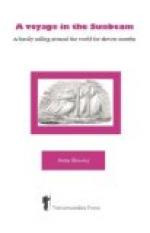As it would have been a long steep walk back, and I was very tired, we called to one of the numerous fishing boats near the shore, and were quickly conveyed round to our original starting place. Before we said good-bye, one of the old priests implored to be allowed to dive into the water for half-a-dollar. His request was complied with, and he caught the coin most successfully.
[Illustration: A Boatman]
We lunched at a tea-house, our meal consisting of fish of all kinds, deliciously cooked, and served, fresh from the fire, in a style worthy of Greenwich; and as we had taken the precaution to bring some bread and wine with us, we were independent of the usual rice and saki.
[Illustration: Our Luncheon Bill.]
After this we proceeded on our way towards the Daibutz, or Great Buddha, situated within the limits of what was once the large city of Kama-kura, now only a collection of small hamlets. As all Japanese cities are built of wood, it is not wonderful that they should in time entirely disappear, and leave no trace behind them. But there still remain some of the columns of the temple which once existed in the gardens surrounding the idol. Now he is quite alone; and for centuries has this grand old figure sat, exposed to the elements, serenely smiling on the varying scene beneath him. The figure is of bronze, and is supposed to have been cast about the year 1250 or 1260.
It is some 50 ft. high, with golden eyes and a silver spiral horn on the forehead. It is possible to sit or stand on the thumb, and within the hollow body an altar is erected, at which the priests officiate. Sitting there, amidst a grove of enormous cryptomerias and bamboos, there is an air of ineffable silent strength about that solitary figure, which affords a clue to the tenacity with which the poorer classes cling to Buddhism. The very calmness of these figures must be more suggestive of relief and repose to the poor weary worshippers than the glitter of the looking-glass and crystal ball to be found in the Shintoo temples. The looking-glass is intended to remind believers that the Supreme Being can see their innermost thoughts as clearly as they can perceive their own reflection; while the crystal ball is an emblem of purity. Great store is set by the latter, especially if of large size and without flaw; but to my mind the imperfect ones are the best, as they refract the light and do not look so much like glass.
In another village close by—also part of the ancient Kama-kura—there is a fine temple, dedicated to the God of War; but we were pressed for time, and hurried back to the little carriages. The homeward drive was long and cold; but the Tokaido looked very pretty lighted up, the shadows of the inmates being plainly visible on the paper walls, reminding one of a scene in a pantomime. On our way down a very steep hill we met the men carrying a cango. It is a most uncomfortable-looking basket-work contrivance, in which it is impossible to sit or lie with ease. These cangoes used formerly to be the ordinary conveyance of Japan, but they are now replaced by the jinrikishas, and they are seldom met with, except in the mountains or in out-of-the-way places.




